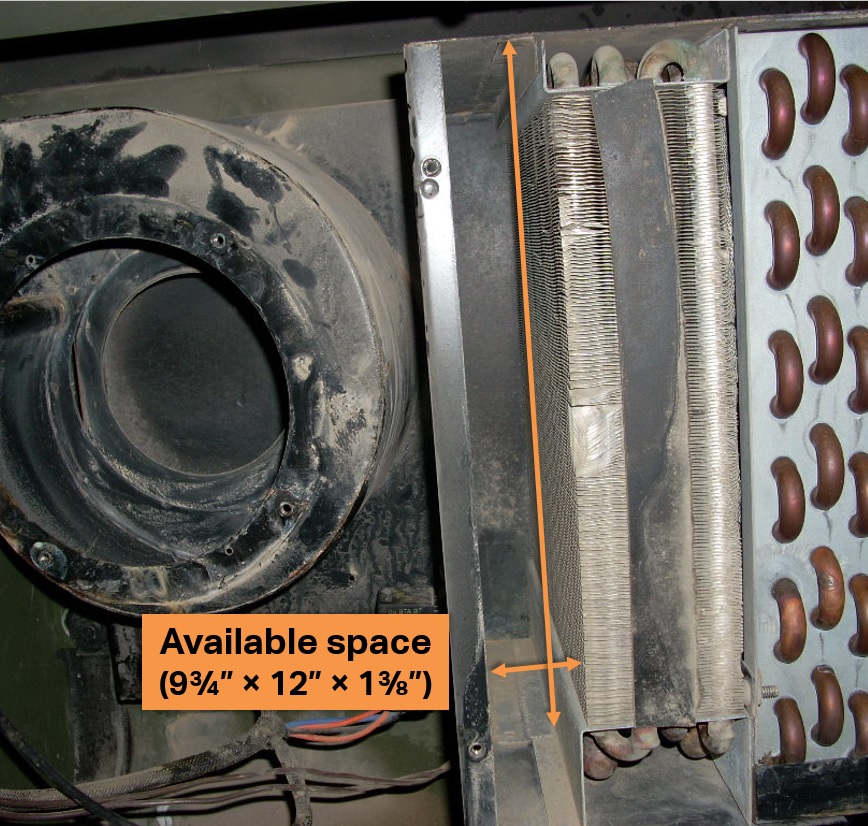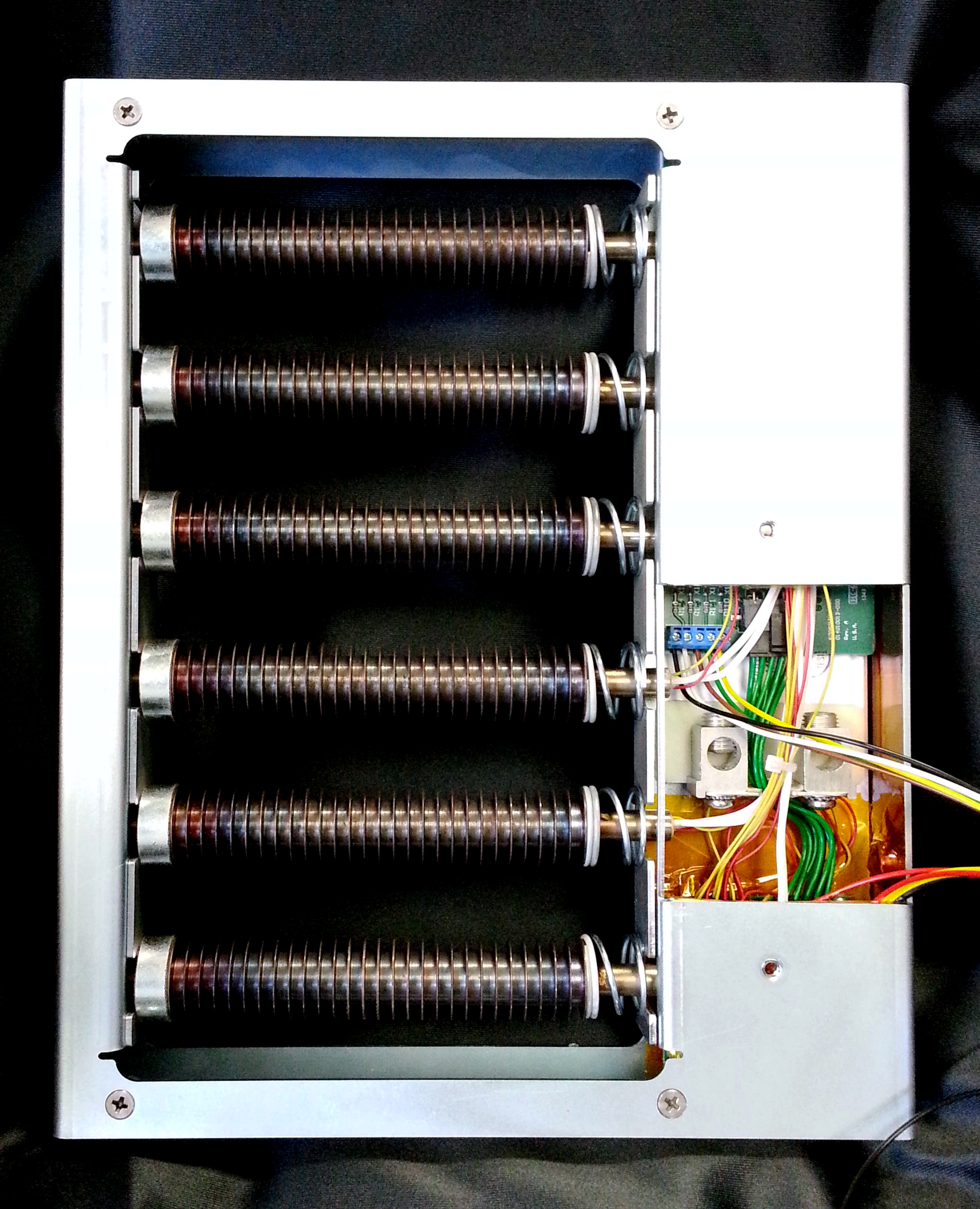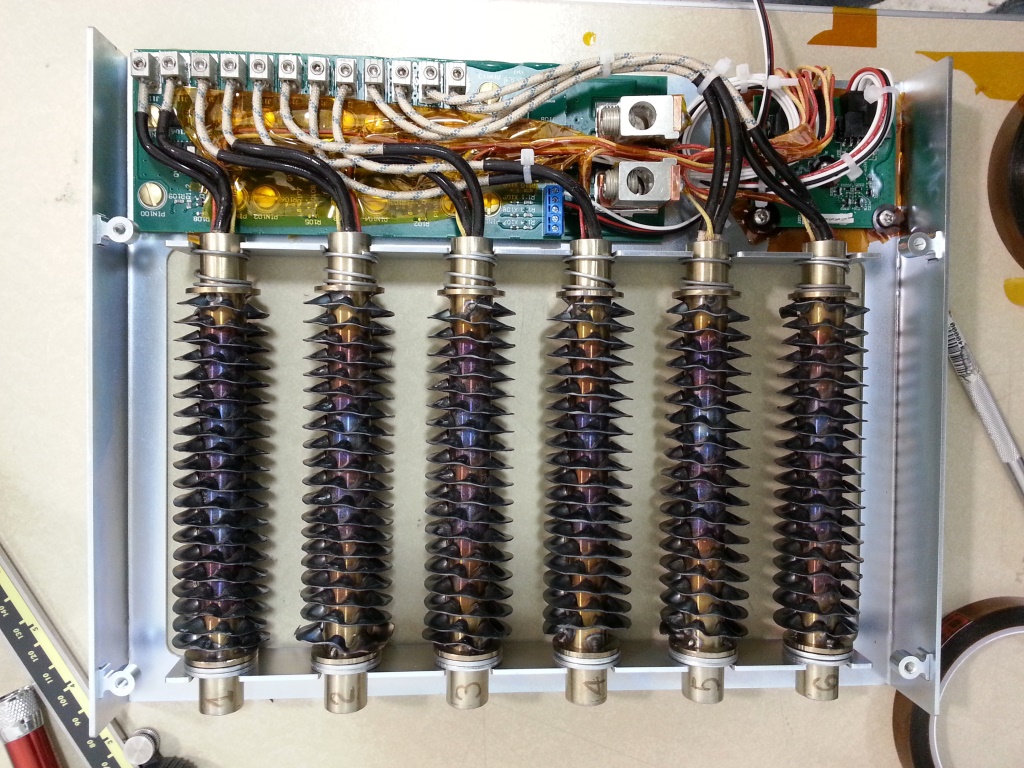K542002: The Navy's Impossible Truck Cab Heater
Here's a useful application that seems like it should be very simple: warming a truck cab with an electric heater instead of the engine's heater, so you don't have to keep the truck idling and waste fuel. It makes so much sense that we get regular calls from engineers who have a bright idea for how exactly to do it – all they need from us is a heater that can output a few kilowatts of heat on the 12-volt or 24-volt DC power supply from the truck's battery. The problem is that in order to get that kind of power on low voltage, you need a very high amperage, in some cases more than a hundred amps: the kind of power that will drain a battery very fast and destroy standard bimetallic thermostats. Which is why we've generally had to tell these engineers that we don't have what they're looking for (and maybe no one does).
In April 2013, something different happened. We got a call from an engineer with the Naval Surface Warfare Center, Dahlgren Division. He had already figured out a way to supply the necessary high current to a truck cab to power a heater, but now he had run into a new, trickier problem: the heater he needed didn't exist. The heater the Navy needed would have to fit all the following criteria:

- Able to output 2 kW of heat for long periods;
- Runs on 24-volt DC power;
- Protected against overheating, in case the blower dies;
- Compatible with power leads coming in from a specific spot;
- And the kicker: Fits in a space smaller than most college textbooks (see right).
Cramming 2 kW of power into this space was a challenge that other companies had balked at, but we had an idea. With no constraints, the standard solution for an application of this sort would be a series of bent-and-formed finned tubular heaters. In this case, though, tubular heaters would have too large a diameter, and there wouldn't be enough room for their twists and turns, nor would we be able to accommodate having leads come out at either end. Instead, we would keep the fins, but switch from tubular heaters to high-watt-density cartridge heaters, and array them as a series of parallel lines in order to fit them in – as in this picture:
The control was the next issue. DC circuits are much harder on a thermostat than AC circuits, because there is no possibility of avoiding arcing by switching at or near the zero-cross point in the current's waveform: the voltage is constant, and so is the arcing. A very high-current DC circuit like this one would make the problem more severe still; a standard mechanical thermostat might last a few months or just a few weeks, but would certainly fail soon and often. So with the team at engenity, we developed a fully custom solid-state temperature controller, eliminating the problem of arcing altogether by doing away with any circuits that close and open mechanically. For a further degree of control, we added a thermocouple to each cartridge to create a high-limit switch, preventing the cartridge from overheating and melting down in case of a blower failure.
 We carefully arranged these components into the form required by the placement of the incoming lead wires and enclosed the circuitry. With our tests showing that the heater was outputting the necessary power, and that it could run for days even with no air circulation, we shipped the prototype heater to the Navy, where it is undergoing testing and approval. We expect these heaters to be installed in many trucks in the Navy's fleet soon, saving taxpayers tens of millions of dollars in idling fuel costs.
We carefully arranged these components into the form required by the placement of the incoming lead wires and enclosed the circuitry. With our tests showing that the heater was outputting the necessary power, and that it could run for days even with no air circulation, we shipped the prototype heater to the Navy, where it is undergoing testing and approval. We expect these heaters to be installed in many trucks in the Navy's fleet soon, saving taxpayers tens of millions of dollars in idling fuel costs.
If you're in need of a team that can take on an engineering challenge and provide a solution that has never been worked out before – or if you're interested in this specific heater – we're available to help solve your particular application needs. Call us at 866 685-4443, email us, or send us a contact form, and we'll get to work taking care of your heating problem.

